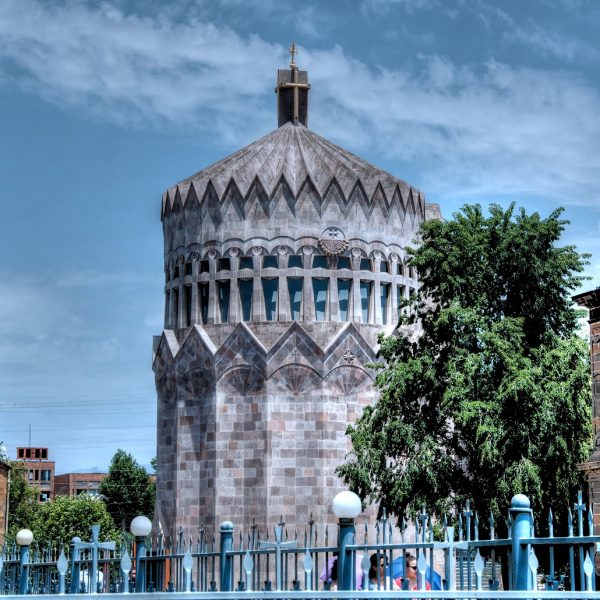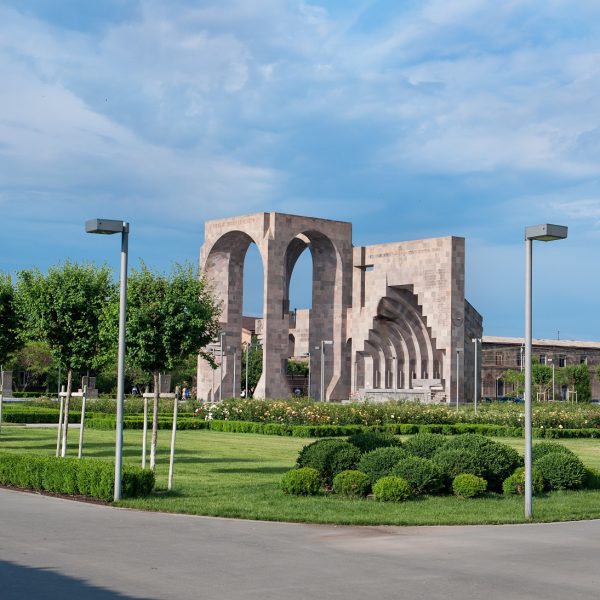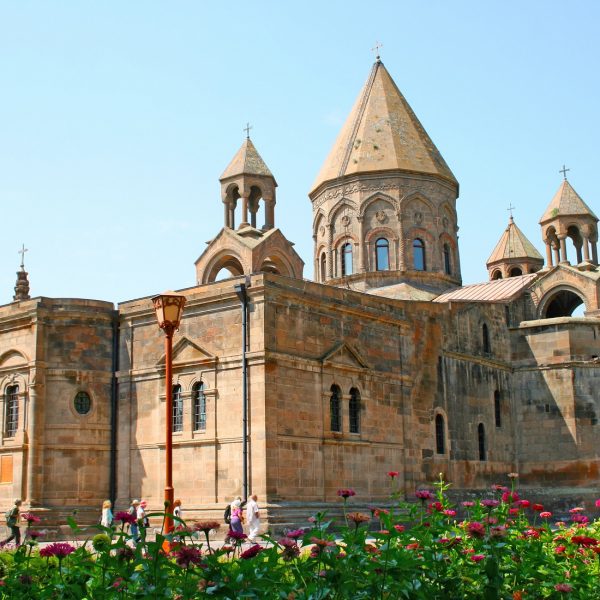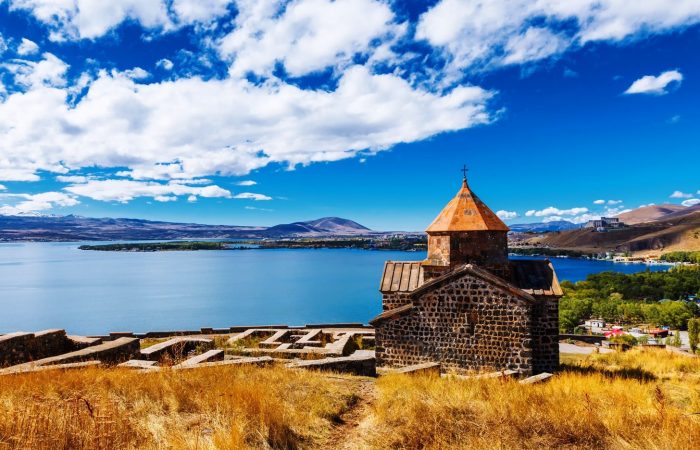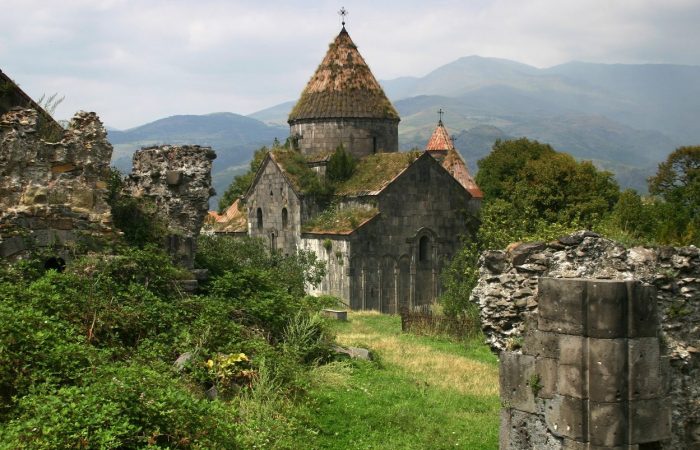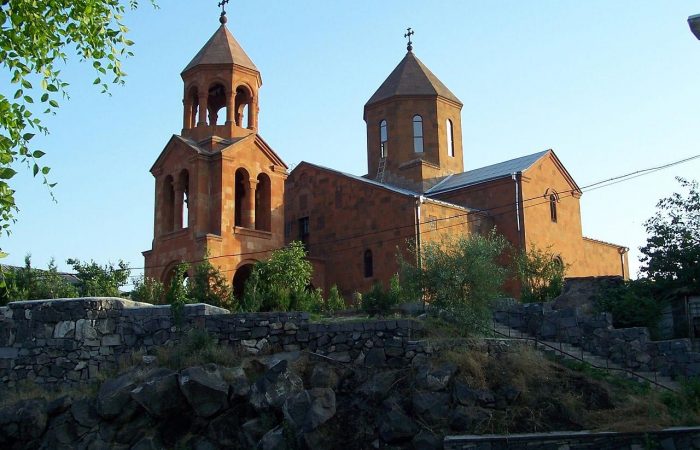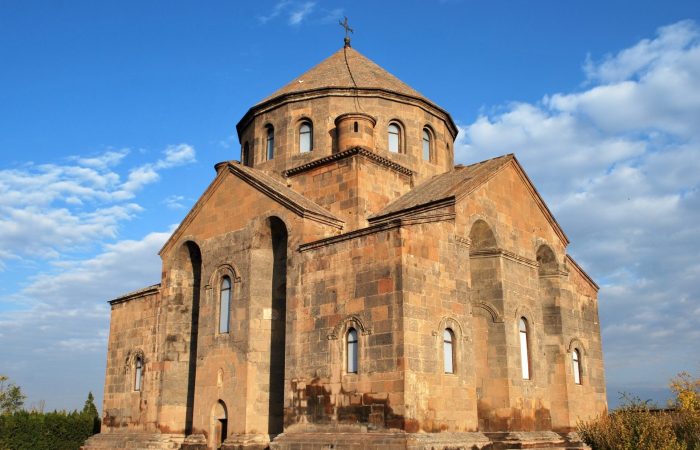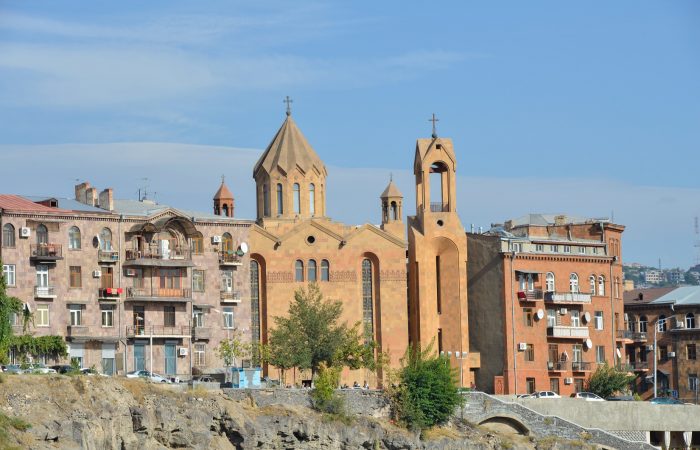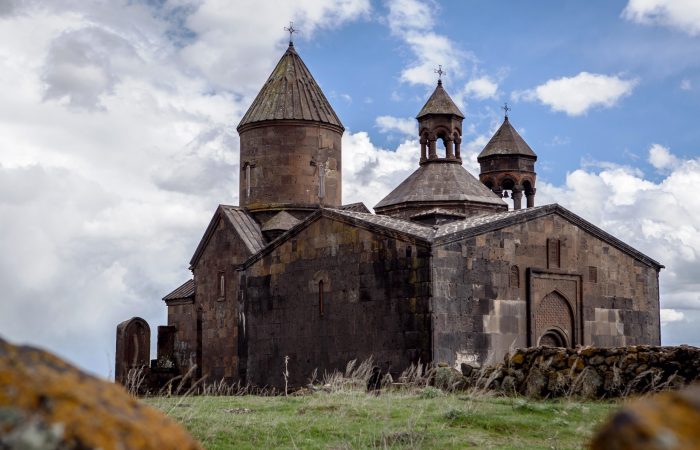Ejmiatsin: History
Ejmiatsin has been inhabitied since the oldest times. The first written mentions of Ejmiatsin city were found in the inscription of Urartian King Rusa II (685-645 BC) in which the city is mentioned as Kuarlini.
In the sixth century Vardges Manuk, the son-in-law of Armenian King Ervand Sakavakyats, built a large country-town in the same place and named it Vardgesavan, meaning the country-town of Vardges. In 117-140 King Vagharsh I Arshakuni fortified the city and renamed it Vagharshapat. Already in 428 the city had a citadel, royal courts, prison, tower walls and so on. The significance of the city greatly increased after the adoption of Christianity in 301.
According to Agathangelos, Gregory the Illuminator had a vision in which Jesus Christ descended in Vagharshapat and showed the place where a church should be built. In 301-303 the Mother Cathedral of Saint Ejmiatsin was built (Ejmiatsin means the “Descent of the Only Begotten Son”). Within the 13th-15th centuries Vagharshapat was more known as Ejmiatsin.
In 1441 the city became the spiritual center of Armenians and the Holy See of the Catholicos. Within the 17th-18th centuries the economic and commercial life of the city flourished. The tradesmen of Ejmiatsin city used to export cotton, wine and so on.
The current plan of the city was designed by architect Alexander Tamanyan in 1925.
Vagharshapat was renamed Ejmiatsin in the second half of the 20th century, in 1945.
Ejmiatsin: Today
Presently Ejmiatsin is one of the most impressive cities of Armenia. Wine and brandy factories operate in the city. The existence of various artificial lakes as well as the favorable climate make it possible to raise fish there. Especially high is the demand for the trout not only in Armenia but also in Europe and CIS states.
The city has 14 schools, 8 kindergartens, a sport school, 2 music schools, an art school, 5 museums, 7 libraries, a state college and the university of Gregory the Illuminator. Next to the Mother Cathedral there is Gevorkian Theological Seminary.
Ejmiatsin: Churches
Mother Cathedral of Holy Ejmiatsin – The Mother Cathedral of Holy Ejmiatsin was built in the beginning of the 4th century in the place of a pagan temple. Initially the cathedral belonged to the basilica type, but in 480 Prince Vasak Mamikonyan rebuilt it. After the reconstruction the cathedral acquired a cruciform layout. Other than that, the four free pillars were domed.
The belfry was built in the 17th century and part of the museum was built in the 18th century. Today the museum houses various valuable works of Armenian church art, manuscripts, collections of old Armenian coins, rugs, paintings and so on.
Saint Hripsime Monastery – The Monastery of Saint Hripsime is one of the masterpieces of Armenian architecture. The monastery is believed to be built in 618 in the place where virgin Hripsime is believed to be martyred for having spread Christianity in Armenia.
Saint Gayane Monastery – The Monastery of Saint Gayane was built in 630 upon the grave of virgin Gayane who was martyred together with virgin Hripsime. It’s a domed basilica type church with three entries – northern, southern and western. The main entry is the western.
Saint Shoghakat Church – The Church of Saint Shoghakat is comparably smaller but still it features attractive architectural solutions. It was built in 1694 to the west of the Monastery of Saint Hripsime. The legend has it, the church was built in the place where the “light dropped” on the martyred Christian virgins (Shoghakat means “drop of light”).
The church is included in UNESCO World Heritage List.
Saint Holy Mother of God church – The church was built in 1767 by Catholicos of all Armenians Simeon Erevantsi. Originally, the church was wood-made. The stone building of the church is believed to be constructed a century later. Interestingly, the church had no belfry and the bells of the church used to ring due to a specially made tool with two bells. It was placed on the roof of the church and was removed after the reparation works.
Ejmiatsin: Museums
In a broader sense, museums express the attitude of a certain society toward their historical-cultural heritage.The first museums are thought to come into existence in the 18th century and the first was the British Museum in London.
Presently, nine museums operate in Ejmiatsin out of which the following two are especially worth a visit.
Museum of Mother Cathedral of Holy Ejmiatsin – There are a myriad of museums in Armenia and the oldest is the Museum of Mother Cathedral of Holy Ejmiatsin. The museum includes works of Armenian church art, manuscripts, collections of old Armenian coins, rugs, paintings, Mass clothes and items. Of utmost importance are the three relics brought to the museum; they are the Holy Spear (it was once in the Monastery of Geghard), the right of Gregory the Illuminator and a piece of Noah’s Ark.
Zvartnots Historical-Architectural Reserve Musuem – This reserve museum was established in 1939 to the southwest of the Cathedral of Zvartnots. The museum includes 4446 samples but the exposition features only 1286 stone pieces. Part of the exposition is displayed under the open sky, while the rest is stored.
Ejmiatsin: Monuments
As you walk in the city you come across various monuments, among them are the following historical-cultural pieces:
The Right Hand Monument – This monument is one of the most interesting ones in the city. It’s the right hand of Saint Gregory the Illuminator and was erected in 2010.
Armenian Genocide Memorial – Armenian Genocide Memorials can be found all over the world, and it’s not surprising that one of them was erected in the primary religious city of Armenia. It was completed and erected in 1965. The memorial is made of basalt stone.
Alert – There is one memorial in the city, which needs some explanation because without it, the memorial might appear just a group of people and nothing more. The memorial is called “Alert” and is dedicated to the intellectuals who didn’t survive the Armenian Genocide. The architect of the basalt-made memorial is Levon Tokmajyan, and it was erected in 2011.
The memorial features such Armenian intellectuals as Grigor Zohrap, Siamanto, Siamanto’s mother, Erukhan, Tiran Chraqyan (Indra), Komitas, Tlkatintsi, Daniel Varujan, Ruben Sevak and Ruben Zardaryan. Also, right in front of this group memorial there is the statue of a kneeling man; this statue symbolizes the grateful people of Armenia.
Mesrop Mashtots and Koryun – Those who have already have been to Matenadaran, have no doubt seen the statue of Mesrop Mashtots and Koryun in front of it and therefore already have some idea of what value this person represents for the Armenian nation and what great role he played in the course of the Armenian history.
Mesrop Mashtots is the inventor of the beautiful Armenian alphabet and Koryun, the boy kneeling in front of him, is his student. The invention of the Armenian alphabet was crucial for the Armenian nation that is why Mesrop Mashtots until this day is honored and highly valued.
Motherhood – Made of white marble this monument stands for motherhood. The author of the statue is Levon Tokmajyan. The statue was erected in 1975.
These are only some of the monuments, the number is higher so make sure you have enough time to stroll in the city and see all of them. Lastly, the main street of the city is especially worth to be mentioned. It’s called Araratyan because it stretches to Biblical Mount Ararat. Also, the city has various restaurants, taverns and cafes, but strange as it might sound it lacks hotels.

